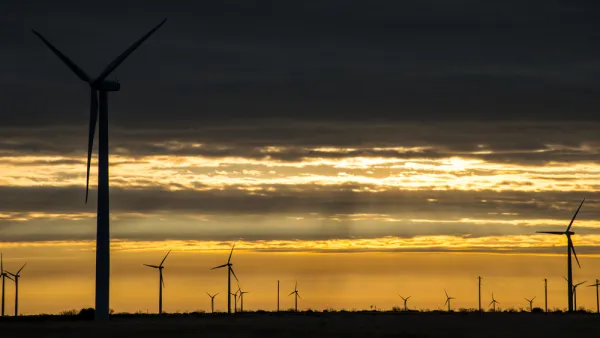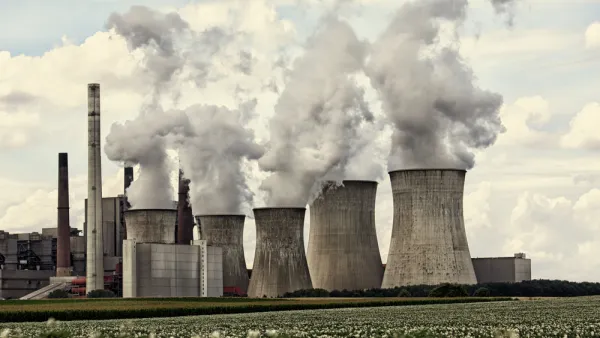Motivated in part by the E.P.A.'s proposed rules to reduce power plant emissions, Minn. Power is burning a greener variety of coal by adding wood to the fuel, helping to meet its renewable power goal and reduce conventional air pollutants and CO2.
The Times veteran environment and energy reporter, Matthew L. Wald writes that Minnesota Power is injecting "waste wood from paper mills, furniture factories and logging operations" into their coal powered plants so as to increase the percentage of renewables they use. Technically referred to as "Biomass Co-firing in Industrial Boilers" (PDF) by the Environmental Protection Agency, it has the added benefit of reducing most conventional air pollutants. Among some of the EPA's findings:
SO2 emissions were essentially eliminated using this high blend of woody biomass. NOX emissions were also greatly reduced when co-firing... and there was a statistically significant change [decrease] in CO2 emissions and a large increase in CO emissions...the total particulate emission rate was reduced by 81 percent.
As for the CO2 emitted from the wood, Wald writes that "regulators usually count its use as zero carbon", notwithstanding the claim from "some opponents of using wood (who) say that disrupting forests means added carbon dioxide." Unlike coal, wood is not a fossil fuel - it's a renewable fuel, and there are huge benefits to adding it to coal should E.P.A. regulate existing power plants, as Wald writes below.
For companies like Minnesota Power, co-firing will be one of the leading options if the E.P.A., which recently proposed limits on carbon emissions for new plants, follows through on its plan to develop limits for old ones. Using modest amounts of wood at a large number of coal plants could be a relatively quick way to phase in renewable energy. And unlike wind or solar power electricity from a boiler, burning wood is easy to schedule and integrate into the grid.
Coming to a city near you: "E.P.A. is in the midst of 'listening sessions' in 11 cities around the country, to gather ideas from the public about putting carbon limits on existing plants. Last week it held an eight-hour session in Denver," writes Wald.
But co-firing is no sure win. "In some cases, particularly for bigger companies, there is simply not enough wood as American Electric Power (found in) trying to meet Ohio’s renewable energy standard," Wald notes. And then, there's the increased weight and bulk to consider. "A pound of wood can produce only about two-thirds as much heat as a pound of coal, and it is a lot bigger," according to Wald.
Ultimately, to meet E.P.A.'s new carbon standards, carbon capture and storage will be required for most fossil fuel plants. However, "David L. Nicholls, a forest products technologist at the United States Forest Service and a specialist on co-firing (PDF), who is based in Sitka, Alaska," suggested, “You could look at co-firing as a bridge strategy.”
FULL STORY: Power Plants Try Burning Wood With Coal to Cut Emissions

National Parks Layoffs Will Cause Communities to Lose Billions
Thousands of essential park workers were laid off this week, just before the busy spring break season.

Retro-silient?: America’s First “Eco-burb,” The Woodlands Turns 50
A master-planned community north of Houston offers lessons on green infrastructure and resilient design, but falls short of its founder’s lofty affordability and walkability goals.

Delivering for America Plan Will Downgrade Mail Service in at Least 49.5 Percent of Zip Codes
Republican and Democrat lawmakers criticize the plan for its disproportionate negative impact on rural communities.

Test News Post 1
This is a summary

Test News Headline 46
Test for the image on the front page.

Balancing Bombs and Butterflies: How the National Guard Protects a Rare Species
The National Guard at Fort Indiantown Gap uses GIS technology and land management strategies to balance military training with conservation efforts, ensuring the survival of the rare eastern regal fritillary butterfly.
Urban Design for Planners 1: Software Tools
This six-course series explores essential urban design concepts using open source software and equips planners with the tools they need to participate fully in the urban design process.
Planning for Universal Design
Learn the tools for implementing Universal Design in planning regulations.
EMC Planning Group, Inc.
Planetizen
Planetizen
Mpact (formerly Rail~Volution)
Great Falls Development Authority, Inc.
HUDs Office of Policy Development and Research
NYU Wagner Graduate School of Public Service




























